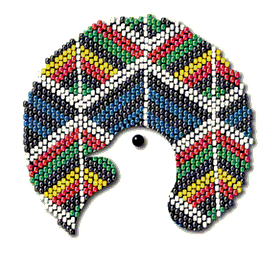Non-Aligned Movement
| 150px | |
| Abbreviation | NAM |
|---|---|
| Formation | 1961 |
| Type | Intergovernmental organization |
| Headquarters | Jakarta, Indonesia |
Membership | 120 member states |
Chairperson | Ilham Aliyev |
The Non-Aligned Movement (NAM) is an international organization of states that are not formally aligned with or against any major power bloc. Founded in 1961 in Belgrade, Yugoslavia, the NAM was established during the Cold War as an effort by countries to avoid alignment with either the United States or the Soviet Union. The movement's founding principles were based on the ideas of self-determination, national independence, and the struggle against imperialism and colonialism.
History[edit | edit source]
The Non-Aligned Movement was conceived during the Bandung Conference in 1955, which was attended by 29 countries from Asia and Africa. The conference was a precursor to the establishment of the NAM, emphasizing the need for a collective voice for newly independent nations. The first official summit of the NAM was held in Belgrade in 1961, hosted by Josip Broz Tito, the President of Yugoslavia. Key figures in the founding of the NAM included Jawaharlal Nehru of India, Gamal Abdel Nasser of Egypt, Sukarno of Indonesia, and Kwame Nkrumah of Ghana.
Objectives[edit | edit source]
The primary objectives of the Non-Aligned Movement are to ensure the national independence, sovereignty, territorial integrity, and security of non-aligned countries. The movement advocates for the peaceful resolution of conflicts, disarmament, and the promotion of economic development and cooperation among developing countries. The NAM also seeks to reform the United Nations to better represent the interests of developing nations.
Membership[edit | edit source]
As of 2023, the Non-Aligned Movement has 120 member states, 17 observer countries, and 10 observer organizations. Membership is open to any country that adheres to the principles of the NAM, which include respect for human rights, non-interference in the internal affairs of states, and the promotion of mutual interests and cooperation.
Structure[edit | edit source]
The NAM operates on the basis of consensus and has no permanent secretariat or headquarters. The movement's activities are coordinated by the chair, which rotates every three years during the NAM summit. The chair is responsible for representing the NAM in international forums and coordinating the implementation of the movement's decisions.
Summits[edit | edit source]
The Non-Aligned Movement holds a summit every three years, where heads of state and government of member countries meet to discuss and adopt policies and strategies. The most recent summit was held in Baku, Azerbaijan in 2019, and the next summit is scheduled to be held in Uganda.
Criticism and Challenges[edit | edit source]
The NAM has faced criticism for its lack of cohesion and effectiveness in addressing global issues. Some critics argue that the movement has become less relevant in the post-Cold War era, as the geopolitical landscape has shifted. Additionally, the diversity of its membership, which includes countries with varying political systems and interests, has made it challenging to achieve consensus on key issues.
See also[edit | edit source]
References[edit | edit source]
External links[edit | edit source]
Navigation: Wellness - Encyclopedia - Health topics - Disease Index - Drugs - World Directory - Gray's Anatomy - Keto diet - Recipes
Search WikiMD
Ad.Tired of being Overweight? Try W8MD's physician weight loss program.
Semaglutide (Ozempic / Wegovy and Tirzepatide (Mounjaro / Zepbound) available.
Advertise on WikiMD
WikiMD is not a substitute for professional medical advice. See full disclaimer.
Credits:Most images are courtesy of Wikimedia commons, and templates Wikipedia, licensed under CC BY SA or similar.Contributors: Prab R. Tumpati, MD




